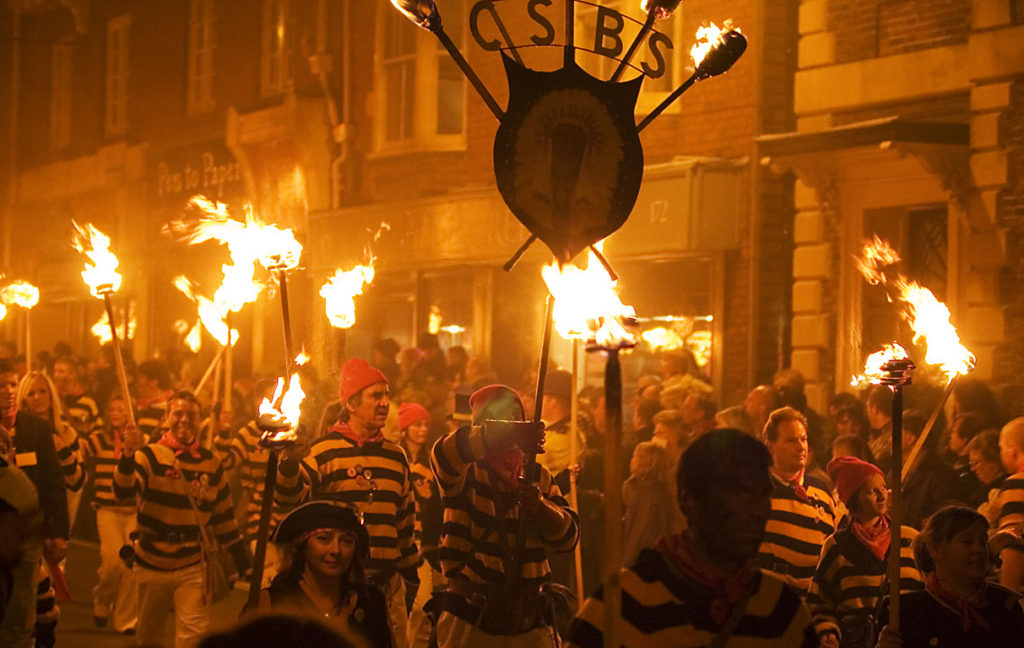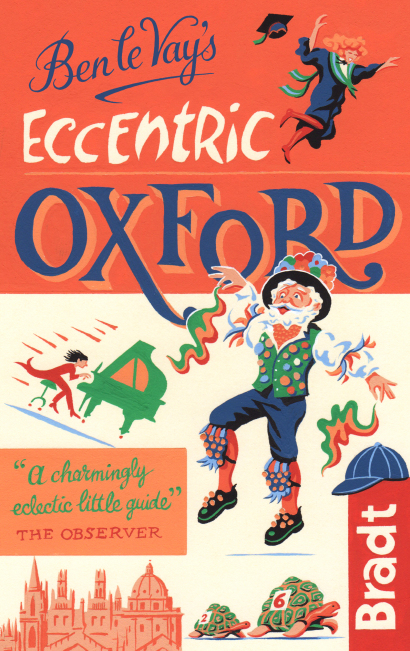Remember, remember the Fifth of November…
Citizens of several English towns where Guy Fawkes Night is celebrated, with more than usual blazing ferocity, have not had much chance to forget it since the old conspirator was caught in 1605. We take a look at some of the more unusual celebrations from across England.
The most bizarre English bonfire night traditions
Lewes, East Sussex
Lewes, East Sussex, normally one of Britain’s sleepiest county towns but once the scene of fiery executions, literally explodes into action with five very serious bonfire societies parading in armour or full costume and carrying flaming torches.
They take various routes, race blazing tar barrels into the river, have a mass procession and then split off for rival and spectacularly sculptural bonfire creations and salvoes of fireworks.

Religious zealotry, perhaps more often associated with Ulster, surfaces: ‘No Popery’ banners are carried and, until recently, an effigy of the Pope was burnt along with Fawkes. Here, however, the slogans are echoes of historical rather than present enmity – after all, the Catholic Gunpowder Plot in 1605 was just a few years after 17 Protestant martyrs were burnt at the stake in Lewes during the brief, Catholic reign of Mary I. Their names are proudly hung from banners across the streets.
Be in town early and leave late to avoid road closures and traffic congestion. And, to fit in with the rowdy locals as the pubs close, it’s best to learn the words of ‘Sussex by the Sea’, which is sung lustily as the bonfires die down. In recent years the town has been so crowded that some pubs haven’t opened at all on the night. Shops are boarded up against the scrum.
Topical hate figures have often been burnt in effigy, such as Hitler or Napoleon at various dates, or even the editor of a local paper who was foolish enough to criticise the whole bonfire society shenanigans.
Not that Lewes is unique. Thirty Sussex villages share this ritual, based on a distant pagan past with fantastical sculptures, untraceable symbols and costumes better than the Mardi Gras. The Sussex bonfire season is ignited at Rotherfield on the last Monday in August, and burns through Uckfield in September, Fletching on the third Saturday in October, before exploding at Littlehampton on the last Saturday.
The anti-Catholicism is little evident outside Lewes, and at Littlehampton Guy Fawkes isn’t much mentioned – but then the event (motto: ‘We burn, to do good’) takes place on land donated by the Duke of Norfolk who owns the nearby splendid Arundel Castle. The duke is traditionally England’s premier Roman Catholic and landlord of many of those taking part in the celebrations.
Battle, Sussex
At Battle near Hastings, an amazing and politically topical sculpture, built over at least a month, is blown to smithereens in a piece of noisy street theatre near Battle Abbey on a Saturday near 5th November. Other towns, such as Guildford, Surrey, had their celebrations banned after 19th-century rioting between bonfire societies and troops, but in Battle they proudly tell of how the authorities were outwitted in the 1920s.
They tried to stop the fire being lit, so decoy rubbish fires were started at the other end of the town; while police were dealing with those, the bonfire supporters threaded through the alleyways and footpaths with great bundles of wood and barrels of tar and set a proper blaze going. It was too late for the authorities, who wisely gave up.
Robertsbridge, Sussex
Robertsbridge has the last of Sussex’s spectacular celebrations on the third Saturday of November, with a procession comprising a thousand costumed people from 23 bonfire societies. Topical enemies are set ablaze – recently it was the fat cat bosses of privatised utility companies and the National Lottery.
As a member of the Robertsbridge Bonfire Society explained: ‘It hasn’t got all that much to do with Guy Fawkes but, as I understand it, goes back to a pagan festival. It was just lucky that Fawkes made his attempt to blow up parliament within three weeks of the old celebration.’
A Sussex fire festival with a dramatic difference is held at Rye, usually on a mid-November Saturday, where a boat was traditionally burnt on the Saltings, in memory of burning the boats of captured French raiders.
Ottery St Mary, Devon
Blazing tar barrels are also much in evidence at the culmination of a day of celebrations at Ottery St Mary, Devon, near Honiton, on 5 November, or the 4th if the 5th is a Sunday.
Nine are carried through the village on prescribed routes, men with their hands and arms swathed in sacking carrying each until the heat becomes unbearable. This goes on until around 11.45pm and ends in a huge bonfire. Hatherleigh, near Okehampton, Devon, has another fire festival, usually on the first Wednesday after 5 November.
Shebbear, Devon
Britain’s oddest 5th November ceremony can also be found in Devon – at Shebbear near Holsworthy. Turning the Devil’s Boulder dates back to well before Guy Fawkes. The massive stone lying outside the churchyard is said to have been dropped by the Devil on his way to harm the village, and it is turned by the villagers each 5th November after a deliberately discordant peal of bells is rung to drive Old Nick away – making a clamour to drive out devils is an almost worldwide folk custom.
The Turning has gone on for centuries, but during World War II it was felt that it might be inappropriate and was dropped in 1940. The desperate war news only got worse, so the custom went ahead after all, a week late. It was felt no stone should be left unturned to help Britain’s fortunes. The fortunes of war slowly improved.
More information
For more of Britain’s unusual traditions, check out Ben’s Eccentric guides:

